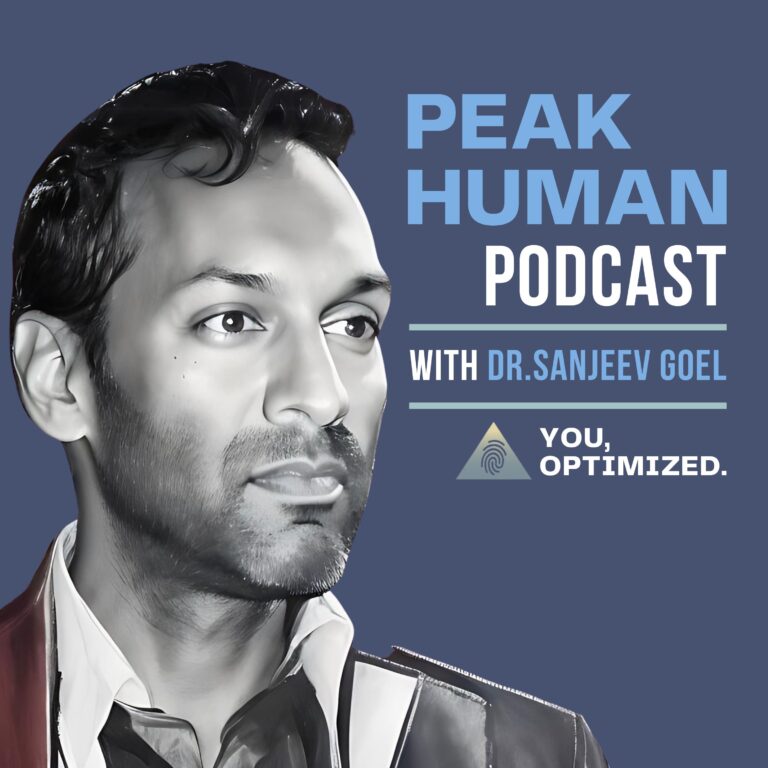Overview
Aging is associated with the passage of time.
While humans cannot control how time passes, scientists are looking into the possibility of slowing, stopping, or even reversing the aging process by determining its hallmarks. This article reviews the latest research on these factors and the future of the science of aging.
RELATED: What Is Cellular Senescence & Its Role in Aging
Live a Healthy Life by Understanding the Hallmarks of Aging
Aging: An Inevitable Part of Life
Aging is considered a “natural” and progressive deterioration of the body in all living organisms, leading to impaired functioning and increased susceptibility to morbidity and mortality.
While the exact cause of aging is not fully understood, the accumulation of cellular damage is thought to be the general cause. Given that the senior population is living longer due to medical advances, scientists are investigating the possibility of controlling the rate of aging by changes in genetics and biochemical processes.
What Are the Hallmarks of Aging?

To manipulate the aging process, scientists first identified and categorized a group of cellular and molecular damages to all aging organisms, known as the “hallmarks of aging.”
These hallmarks may allow scientists to determine how the aging process occurs at the cellular and molecular level and potentially play a role in intervening with the aging process.
The nine hallmarks of aging include:
Cellular Senescence
The typical cell cycle is a series of events that leads to cell division and is essential for all organisms’ development. Cells may respond to stimuli by inducing repair, cell death, or senescence, depending on the cell type and the triggers.
Cellular senescence is a cellular program that regulates the cell cycle in response to various intrinsic and extrinsic stimuli such as oxidative stress, inflammation, or nutrient deficiency.
Senescence can act as a powerful anti-tumor mechanism by preventing the proliferation of potentially cancerous cells. However, senescence can also be harmful because it inhibits normal cell proliferation, contributing to altered tissue repair and regeneration and, ultimately, aging.
For this reason, cellular senescence is widely regarded as a “double-edged sword,” with both beneficial and detrimental effects on organism health.
Mitochondrial Dysfunction
Mitochondria are the vital organelles present in almost every cell of a living organism. These microscopic organelles generate most of the cell’s supply of ATP or the “molecular unit of currency” of energy transfer.
For this reason, mitochondrial dysfunction, characterized by the reduction in the ATP generation in the mitochondria, can lead to excess fatigue and various symptoms that can be seen in chronic diseases. These diseases include neurodegenerative, cardiovascular, autoimmune, gastrointestinal, and musculoskeletal disorders.
Given that mitochondrial function becomes perturbed by aging, mitochondrial dysfunction is a characteristic of aging and, thereby, another candidate for the hallmarks of aging.
According to the Mitochondrial Free Radical Theory of Aging, the progressive mitochondrial dysfunction that occurs with aging leads to increased production of reactive oxygen species (ROS), which causes further mitochondrial deterioration and cellular damage.
RELATED: What Is Mitochondrial Dysfunction? Everything You Need to Know
Telomere Attrition
Telomeres are the protective structures found at the tips of the chromosomes. They consist of the same DNA sequence, usually repeated about 3,000 times in length. The primary role of the telomeres is to protect the chromosomes by acting as a cap, preventing them from losing their length and integrity.
Telomere length is a vital factor that affects the aging process, as shorter telomeres are associated with various age-related diseases, such as cardiovascular diseases and some cancers.
According to research, the chromosomal structures play an essential role in cellular senescence, and their age-related shortening is widely regarded as a significant contributor to organismal aging. Therefore, telomere attrition, or telomere shortening, is recognized by scientists as another powerful hallmark of aging.
RELATED: The Relationship of Telomeres to Biological Aging Explained
Genomic Instability
Genome instability, or the tendency of the genome to change DNA information content due to mutation, is thought to be another hallmark of aging. Simply put, genomic instability is the result of unrepaired DNA damage.
DNA damage can have an impact on genes and their transcription. As a result, cells become dysfunctional, putting tissue and homeostasis at risk. This risk is serious when DNA damage affects stem cell function. Damaged cells unable to repair themselves enter apoptosis, a self-destruct mechanism that marks them for removal by the immune system.
Point mutations, deletions, insertions, chromosomal rearrangements, and whole-chromosome numerical changes are all examples of DNA alterations that permanently alter the genome’s information content and cause DNA damage.
Epigenetic Alterations
Epigenetic alteration is a change in the chemical structure of the DNA that does not affect the coding sequence. For example, epigenetic changes occur when a chemical group called “methyl” is added to or removed from the DNA.
These changes may impair our cells’ functions and increase our risk of cancer and other age-related diseases. Moreover, epigenetic changes can harm or suppress immune cells, causing our immune system to fail and leaving us vulnerable to pathogens.
Epigenetic alterations may occur due to environmental factors such as diet, exercise, drugs, and chemicals. They can also be passed down from parent to child.
Loss of Proteostasis
Proteins are a vital component that plays a role in almost every aspect of our health. They do most of the work in cells and are essential for tissue and organ function, regulation, and structure. Proteostasis (protein homeostasis) is the balanced state in which the production of proteins in the body remains in stability without any defects.
Unfortunately, this protein-building mechanism may fail as we age, resulting in too few or too many proteins. It can even result in misfolded proteins bent out of shape and unable to perform their functions. In a worst-case scenario, defective proteins cause abnormal cell behavior by sending the wrong instructions.
Therefore, many scientists categorize the loss of proteostasis as a common feature of aging and age-related diseases, such as Alzheimer’s or Parkinson’s disease.
Deregulated Nutrient Sensing
Our cells rely on the “fuel,” or the nutrients from the food we consume, to function and decide if it is time to grow and proliferate.
Before the cells can utilize the nutrients, they need to sense and respond to the available nutrient source. Therefore, the ability to sense and respond to nutrients, known as nutrient sensing, is vital for our cells.
When the environmental nutrient levels are rich, our cells store the nutrition and use it for growth and proliferation. In contrast, during food scarcity, the cells mobilize the internal stores to stabilize the nutrient levels and remain in homeostasis.
However, this vital nutrient-sensing pathway is deregulated in metabolic diseases, common in aged people. Deregulated nutrient sensing is another hallmark of aging characterized by an alteration in how our cells measure the amount of nutrition available to them.
Stem Cell Exhaustion
Every single cell in our body is responsible for one specific job. For example, the blood cells make up the blood tissues and maintain an average blood volume in our bodies. On the other hand, the bone cells replace the old bones that are “reabsorbed” during bone resorption.
But where do these cells and their specific task come from? The stem cells. As the origin of all cells, the stem cells are responsible for various functions, including beneficial signaling that improves tissue function and regulation and replaces damaged or lost blood cells and solid tissues.
However, as we age, our stem cell activity slowly diminishes, causing these vital cells to be present in fewer and fewer numbers. Although the stem cells can generate themselves, they do so with lower quality and speed during aging, finally contributing to stem cell exhaustion and age-related diseases.
Altered Intercellular Communication
Our cells rely on the signals, or the chemical messages, across the body to determine how they function. However, this signaling environment may become flawed with advanced age, leading to some diseases and disabilities related to aging.
The abnormality in how our cells work together due to changes in the signaling pathways is known as altered intercellular communication, the last hallmark of aging. This alteration occurs due to increased inflammatory reactions, a decline in the immune system’s fight against pathogens, and changes in the extracellular environment.
Such a disruption in intercellular communication may allow the onset and spread of diseases, such as cancer cells, that grow out of control.
Why Are the Hallmarks of Aging Important?

The hallmarks of aging are essential to the intervention in the aging process for two significant reasons:
- First, the hallmarks of aging manifest during normal aging, meaning they can be detected and regulated during a person’s life.
- Second, the aggravation of the hallmarks of aging accelerates the aging process, leading to the hypothesis that ameliorating these hallmarks should slow down aging and increase the chances of greater longevity.
Defining aging hallmarks may also help create a foundation for future research into the molecular mechanisms of aging and the development of therapies to improve human healthspan.
However, to date, decelerating normal aging for the achievement of longevity by intervening in the aging hallmarks remains a significant challenge to overcome. There remain many obstacles to fully comprehending this complex biological process.
The History of the Hallmarks of Aging
Since the dawn of humanity, aging has spurred a sense of curiosity in the scientific community, leading to extensive research on this topic.
Nevertheless, a new era of aging research has only existed for several decades after isolating the first long-lived strains in Caenorhabditis Elegans (C. Elegans). To date, the science of aging is facilitated by the growing understanding of the molecular and cellular bases of life and illness.
The current state of aging research resembles cancer research in the past decades. With the release of a landmark paper in 2000, cancer research acquired tremendous pace, identifying six hallmarks of cancer, which were later expanded to ten.
This classification has aided in the current understanding of cancer’s nature and underlying mechanisms. However, at the other end of the spectrum, one central question about the aging hallmarks remains as scientists uncover the link between them.
Are the Hallmarks of Aging Interconnected?

According to research, the hallmarks of aging relate to and impact one another. For example, genomic instability or telomere attrition can trigger cellular senescence, while epigenetic alterations can lead to genomic instability.
Thus, aging hallmarks are not separate entities as previously believed. Instead, they operate as part of a broad and interconnected network. Making changes in one element of this network may affect other factors.
Determining the interconnectedness between the nine hallmarks of aging and their contributions to the aging process is central to identifying safe and efficient pharmaceutical targets to increase human healthspan.
Moreover, a potentially complete discovery of the aging network will benefit the scientific community, ultimately facilitating a greater understanding of aging and age-related illnesses.
RELATED: What Is Mitochondrial Dysfunction? Everything You Need to Know
Recent Findings in the Hallmarks of Aging and Longevity
The rapid technological development in genomic sequencing, a method that identifies changes in areas of the genome, may significantly impact the research on aging by allowing scientists to assess the genetic and epigenetic changes in humans.
This technique is already available to determine the whole-genome sequence of people with the most extended lifespan. Furthermore, this method can compare genomic sequences in short-lived and long-lived animals and analyze age-related changes at the epigenetic level.
To understand the mechanistic connections among the factors that influence and lead to aging, scientists will also need systematic approaches, including developing pharmaceutical targets for promoting longevity.
Bottom Line: A Big Step Toward Controlling the Inevitable
Aging should no longer be viewed as an irreversible process.
Identifying and categorizing the nine hallmarks of aging means a giant leap forward to control the inevitable, potentially facilitating the science of aging and the findings of future therapeutic interventions to extend human life expectancy.
The day will come when we can manipulate how we age by addressing the aging hallmarks. By then, we will be within our reach by utilizing pharmaceutical agents and other comprehensive approaches to anti-aging for achieving longevity.
References
López-Otín, C., Blasco, M., Partridge, L., Serrano, M., Kroemer, G. (2013). The Hallmarks of Aging. CellPress.
Nicolson, G. (2014). Mitochondrial Dysfunction and Chronic Disease: Treatment With Natural Supplements. Integrative Medicine: A Clinician’s Journal (IMCJ).
Labbadia, J., Morimoto, R. (2015). The Biology of Proteostasis in Aging and Disease. Department of Health and Human Services.
Efeyan, A., Comb, W., Sabatini, D. (2015). Nutrient Sensing Mechanisms and Pathways. Department of Health and Human Services.
Barrett, J., Iles, M., Dunning, A., Pooley, K. (2015). Telomere Length and Common Disease: Study Design and Analytical Challenges. Springer.
Vijg, J., Montagna, C. (2017). Genome Instability and Aging: Cause or Effect. Translational Medicine of Aging.
van der Rijt, S., Molenaars, M., McIntyre, R., Janssens, G., Houtkooper, R. (2020). Integrating the Hallmarks of Aging Throughout the Tree of Life: A Focus on Mitochondrial Dysfunction. Frontiers.
Why We Age: Stem Cell Exhaustion. Lifespan Extension Advocacy Foundation (2020).
Kumari, R., Jat, P. (2021). Mechanisms of Cellular Senescence: Cell Cycle Arrest and Senescence Associated Secretory Phenotype. Frontiers.
Vaiserman, A., Krasnienkov, D. (2021). Telomere Length as a Marker of Biological Age: State-of-the-Art, Open Issues, and Future Perspectives. Frontiers.
Bajnath, A. (2021). Altered Intercellular Communication – Where Inflammation Meets Aging. The Institute for Human Optimization.
Why we age: Genomic Instability. Lifespan Extension Advocacy Foundation (2021).
Why We Age: Epigenetic Alterations. Lifespan Extension Advocacy Foundation (2021).
Why We Age: Loss of Proteostasis. Lifespan Extension Advocacy Foundation (2021).
Why We Age: Deregulated Nutrient Sensing. Lifespan Extension Advocacy Foundation (2021).Why We Age: Altered Intercellular Communication. Lifespan Extension Advocacy Foundation (2021).
If you have questions about the hallmarks of aging or any health problems discussed here, connect with us and learn more.
At Peak Human, our team of healthcare professionals is dedicated to helping you reach your ‘peak’ health with a custom whole-person approach. Using the most cutting-edge, science-backed biohacking and aesthetic tools, technologies, and treatments available today, we help you achieve the highest physical/cognitive performance state, improving your overall quality of life.
For questions or to book an appointment, don’t hesitate to contact us. Get personalized support and insight from expert physicians.
UP NEXT:
- 5 Benefits of High-intensity Interval Training
- Rheumatoid Arthritis: Causes, Symptoms & Treatment
- Is It Possible to Prevent Bone Loss? Causes, Symptoms & Treatment





